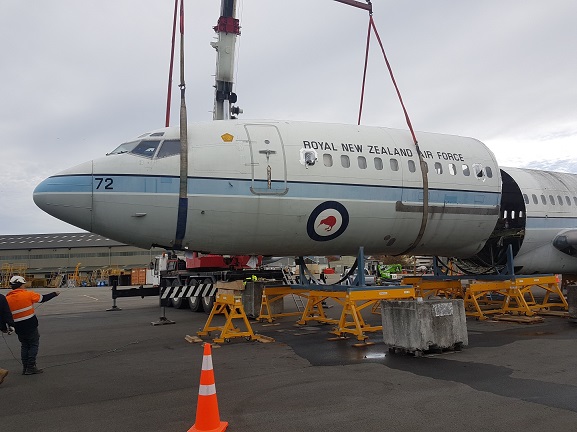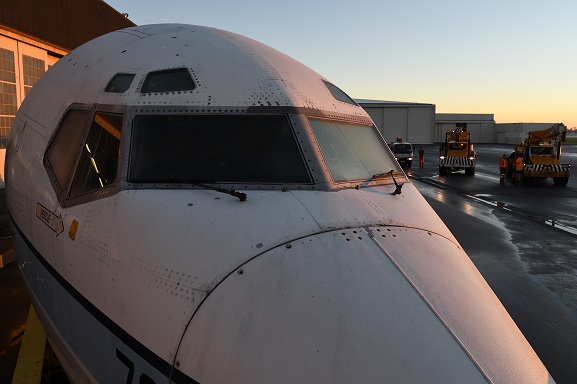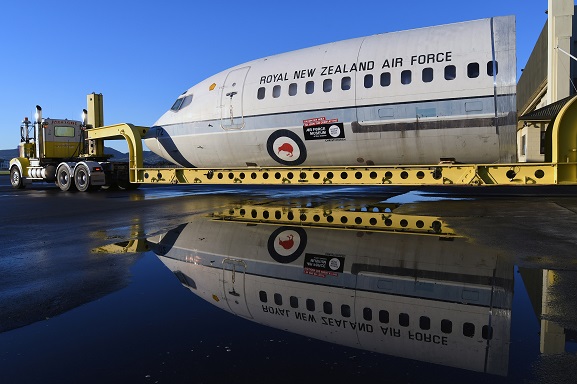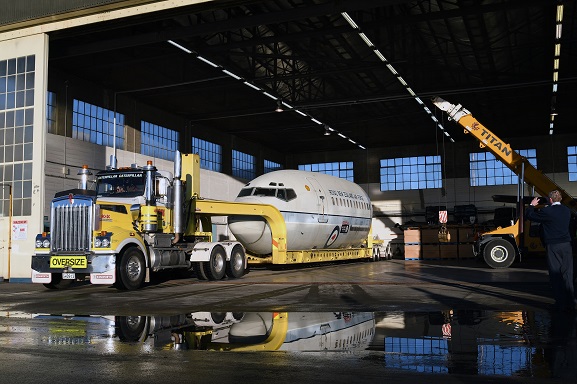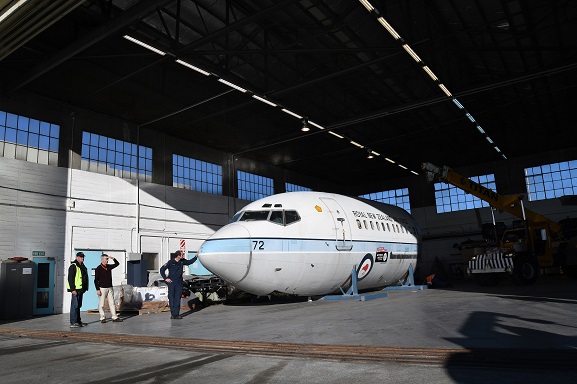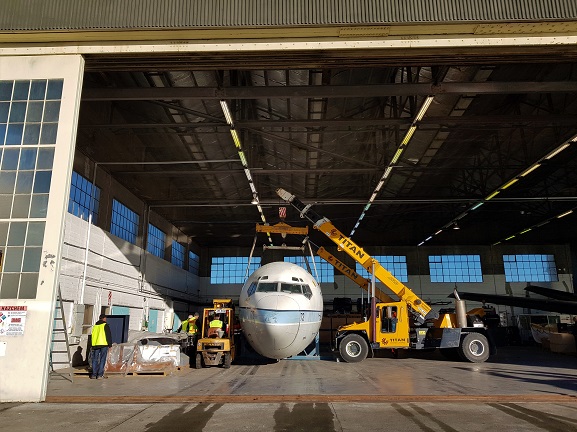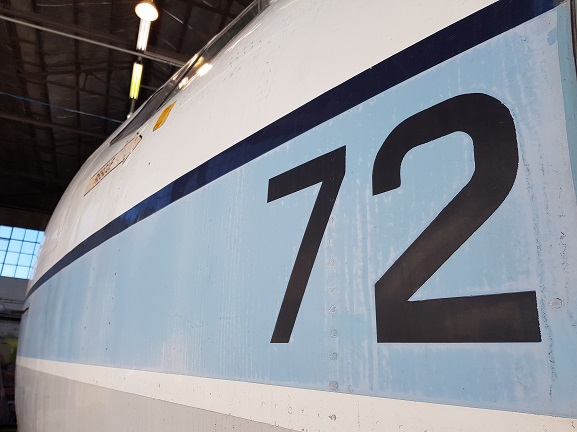This week will see the newest addition to our large object collection, when the nose section of former RNZAF Boeing 727 NZ7272 arrives at the Museum.

The RNZAF acquired three ex-United Airlines Boeing 727s in 1981 for long-range transport to supplement the Lockheed C-130 Hercules fleet which was heavily committed. Two of them, NZ7271 and NZ7272, joined No. 40 Squadron at Whenuapai, while NZ7273 went to Woodbourne as a spares source. Both aircraft gave good service until they were retired in 2003 and replaced by two Boeing 757s. NZ7272 is the only survivor and has sat on the ground at Woodbourne ever since. It was used as a ground training aid by both the RNZAF and Nelson Marlborough Institute of Technology for many years.

NZ7272 ceased to be of use to the Air Force back in 2009 and it became part of the Training Aids Review Project, which is when the Museum became involved. We were not in any position to take the entire aircraft, as this would have required a very large building to house it (something we do not have), not to mention the logistics of getting it here. This is why we opted for just the nose section, back to the aft production joint, which was gratuitously issued to the Museum Trust Board in December 2010.
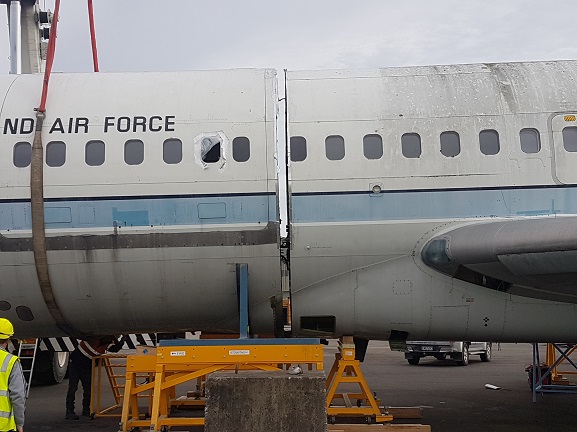
The New Zealand Defence Force was finally able to put together a project team and a budget late last year for the disposal of NZ7272. Airbus was contracted by the project team to remove the engines and they cut the fuselage at the required point on 1 May. The disposal of the remainder of the aircraft is being handled by the project team, however the forward fuselage section will be transported down to the Museum by Jacksons Haulage over the evening of 9/10 May via the Lewis Pass, arriving at Wigram in the early morning. Anyone driving the Lewis Pass route that night will no doubt be very surprised to see a large piece of Boeing aircraft en route!
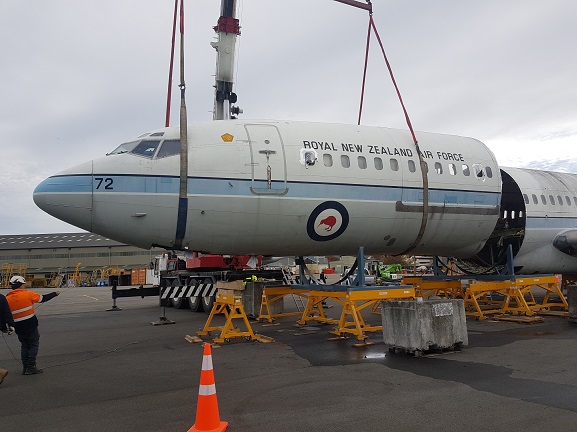


The fuselage will be unloaded and stored on site at the Museum but will not be available to the public for the time being. It will, in time, form part of the aircraft displays in the new main gallery space, and our redevelopment project team is working hard on how best to display it. We are also getting the number 2 JT8D engine off the aircraft which is the only one with any RNZAF provenance, as well as one of the aircraft’s main landing gear assemblies which will be an impressive sight in its own right when displayed.
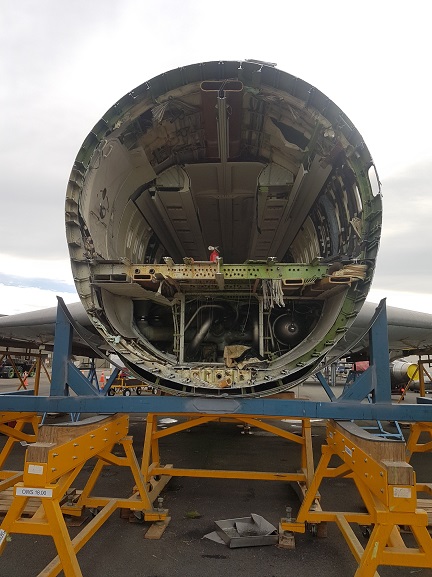
It has taken almost 10 years to reach the point where the 727’s arrival is now so close, and it will be very satisfying to see this piece of RNZAF history roll through the gate and take its rightful place in the Museum’s collection.
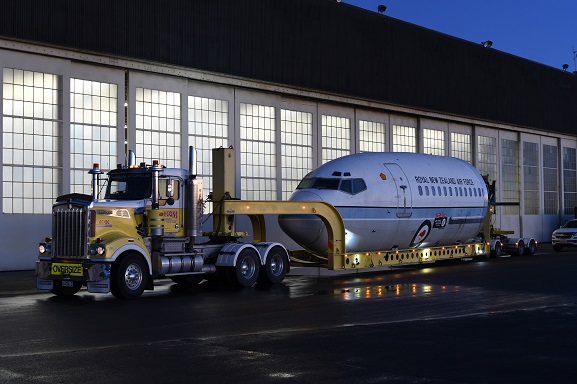
UPDATE | 10 MAY 2019
Following a long, but fortunately uneventful, drive through the night from Woodbourne, the nose section from RNZAF Boeing 727 NZ7272 arrived at Wigram today in the darkness of early morning. After nearly 10 years of planning, it is fantastic to finally have this significant piece of RNZAF heritage preserved in the Museum’s collection.
We wish to extend a big thank you to all who helped make this happen, including Peter Lowen, the B727 Disposal Project Manager, and the Logistic Training School at RNZAF Base Woodbourne, particularly Flight Sergeant Garth Haylock and Sergeant Pete Barker. A special thanks must also go to the team from Jacksons Haulage in Timaru who transported it down through the Lewis Pass, and Titan Cranes who unloaded it with great skill.




